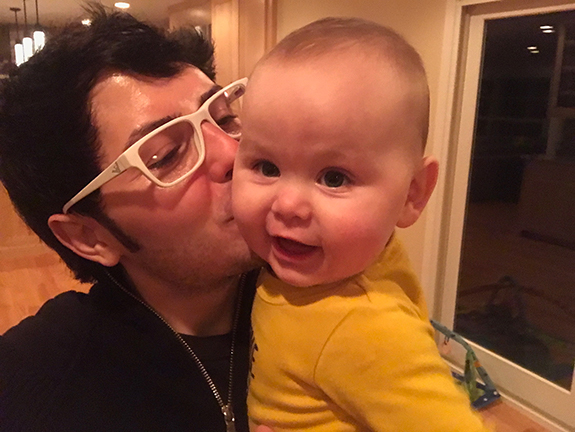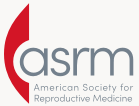Getting Through Failed Transfers
May 10, 2017 by Frank Golden
My personal path to parenthood has not been easy. This is partly because I’m a gay male, but even more so because of the life circumstances leading up to the creation of my family. I went through a period in my life, an exceptionally melancholy period, in which I questioned my meaning, my purpose in this thing called life. I had recently lost a series of close family members and friends. And after my brother’s unexpected death, I fell into a particularly deep depression. My mom and I were the sole survivors of our entire family; we only had each other, and our bond grew strong. In my mom’s eyes, I saw such sadness and such love. Her’s were the eyes of a parent in mourning. I knew then that it was my responsibility to have a child, to carry on our bloodline. This period of my life, albeit painful, changed the way I viewed the world, and ultimately led me to where I am today.
When I met Adam, I made it clear that I wanted a family. For gay couples, and for all couples, really, this is a conversation that needs to happen. As our relationship got more serious, I began thoroughly researching Surrogacy. My mind was set: we were going to create a family, and we were going to do it with the help of a Surrogate. I wanted to expand my lineage, not as an attempt to recreate my brother, but as an attempt to honor his memory. Most of all, I wanted to do it for my mom and for the son she lost.
Adam and I began our first Surrogacy Journey in 2011. After selecting our egg donor, IVF clinic, agency, and after being matched with our Surrogate, we created our embryos, or our soon-to-be children, as we called them. At the risk of sounding boastful, I must say that our “soon-to-be children” were beautiful, perhaps the most beautiful creations ever. Or, maybe I’m just the typical, overly proud parent. It’s possible.
We had seven beautiful embryos in total- three of which contained Adam’s genetics, and four of which contained mine. As new Intended Parents, and as newcomers to the reproductive community, we did not fully understand the potential consequences associated with double embryo transfers. We just wanted to have two babies, one with each of our DNA. And honestly, we wanted to save money. As petty as this sounds, it’s the truth. Surrogacy is expensive, and we wanted to cut costs any way we could.
We transferred our best embryos, or “the embryos with the highest chance of success.” We sent “sticky thoughts” into the universe, and then we waited. We waited for Beta test number one, and we waited for Beta test number two. We waited for the six-week ultrasound, the ultrasound in which we would hear our children’s heartbeat for the first time. We didn’t prepare for either embryo to fail. We expected to have twins. I know how naïve that sounds now, but at the time, we didn’t know any better. Sure, we were aware of the possibility of a failed transfer, but that didn’t mean it was going to happen to us. It couldn’t. We were healthy and young. We handpicked our egg donor from a credible source. We genetically tested our embryos and selected the best ones for transfer. Our Surrogate followed protocol and responded well to her medication cycle. We did everything right. And more than anything else, the true reason why our transfer wouldn’t fail, why it couldn’t fail, was because we deserved a successful transfer. We deserved to have the family we always dreamed of.
This first transfer was, for a loss of better words, bittersweet. One of our embryos stuck, and the other did not. It wasn’t until Sophia was born that we knew whose embryo was successful, and whose had failed. And at that point, it didn’t matter. We had our baby. As a gay couple, our family was a symbol of pride, a symbol of perseverance. And it was what we always wanted. Sophia, although genetically related to Adam, was my daughter as much as she was his. In Sophia’s eyes, I saw Adam’s eyes; I saw the face of the man I loved in the face of this little being. It was a crazy, wonderful thing. The whirlwind of being a new parent- the crying, the diapers, the laughter, the love- was a distraction for the pangs of sadness I felt over the loss of my loved ones and the loss of my embryo.
Fortunately, after that first transfer, I had three remaining embryos. Those embryos held my dreams, my hopes. They were healthy embryos, and this time they would stick. I had faith going into the process. I maintained that faith up until the first transfer failed. For the second transfer, we implanted both remaining embryos, and both failed. All my embryos were gone, and with them, my hope. I experienced such helplessness, such grief. When your embryo fails, simply put, you feel like a failure. I felt this way, and my Intended Parents tell me they feel this way, too. I questioned myself, I questioned my DNA.
Eventually, we attempted another journey. We retrieved more eggs from our donor, the same donor as before. The result was three viable embryos. The last three embryos. This would be mine and Adam’s final attempt at having another child. We were starting to accept the possibility that Sophia would be raised as an only child.
At this point, we were on our third Surrogate. We transferred one of my embryos, the best embryo, and then we waited. We got used to waiting. We got used to failed transfers. And sure enough, that first transfer failed. We attempted one more transfer, again with two embryos. That became our pattern: Single, double. Single, double. This is not to say that double embryo transfers are for everyone- they should be assessed on a situational basis, and our situation called for it.
We don’t know which embryo stuck that day, either embryo 6 or embryo 7. It doesn’t matter at this point because that sticky little embryo is now Silas.
I’ve worked with several Intended Parents who have experienced failed transfers. It’s heartbreaking, but you cannot allow it to deplete your hope. You cannot view yourself as a failure. And you cannot view your Surrogate as a failure either. It’s common for Intended Parents to blame the Surrogate. After the first failed transfer, they are tempted to find another match. Unless she is medically disqualified, we encourage our Intended Parents to stay committed to their Surrogate for up to three transfers. We ask our Surrogates for that same commitment.
If you’re working with a credible agency and IVF clinic, your Surrogate has been thoroughly screened prior to being matched with you. If she did not adhere to her medicine calendar, the IVF clinic will know, and they will not move forward with a transfer. Intended Parents need to trust their Surrogate and remember that she is not a robot, she is not a machine. She is a living, breathing person who has her own set of expectations and emotions to consider. Your Surrogate genuinely wants to help you make a baby. Failed transfers can be just as disheartening for a Surrogate as it is for Intended Parents. Our job as an agency is to manage both sets of emotions- those of the Intended Parents and those of the Surrogate.
Surrogacy and IVF is not an exact science. There are no guarantees. We encourage our Intended Parents to be positive and to be excited. This is a huge step in their lives. On the flip side, we encourage parents to be realistic and to understand all possibilities. I like to call this being “cautiously optimistic”. Failed transfers do happen. As an agency owner, I have seen many failed transfers. I have also seen many successful transfers. I’ve seen transfers fail one, two times before a Surrogate gets pregnant. My personal experience is proof that sometimes it’s just a matter of trying again.
We’ll never know why my first embryos didn’t stick. They were assessed by the IVF clinic and were determined to be “high grade” embryos. Our Surrogates’ uterus linings were ideal and so was their overall health. The embryos should have stuck- but they didn’t. And that’s the thing about IVF and Surrogacy. We can create the perfect environment for a successful transfer, you could have done everything right, and you still risk experiencing a failed transfer. These so called “fails” are not failures. They are not a sign to give up. They are a sign to try again. And then to try again after that. If I had given up after my first, my second, third, or fourth failed transfer, I wouldn’t have Silas. For such a scientific process, there is a deeply spiritual element that plays a part in all of this: every failed transfer is just the universe’s way of bringing you the child you’re supposed to have. I firmly believe this, and so does Silas.














